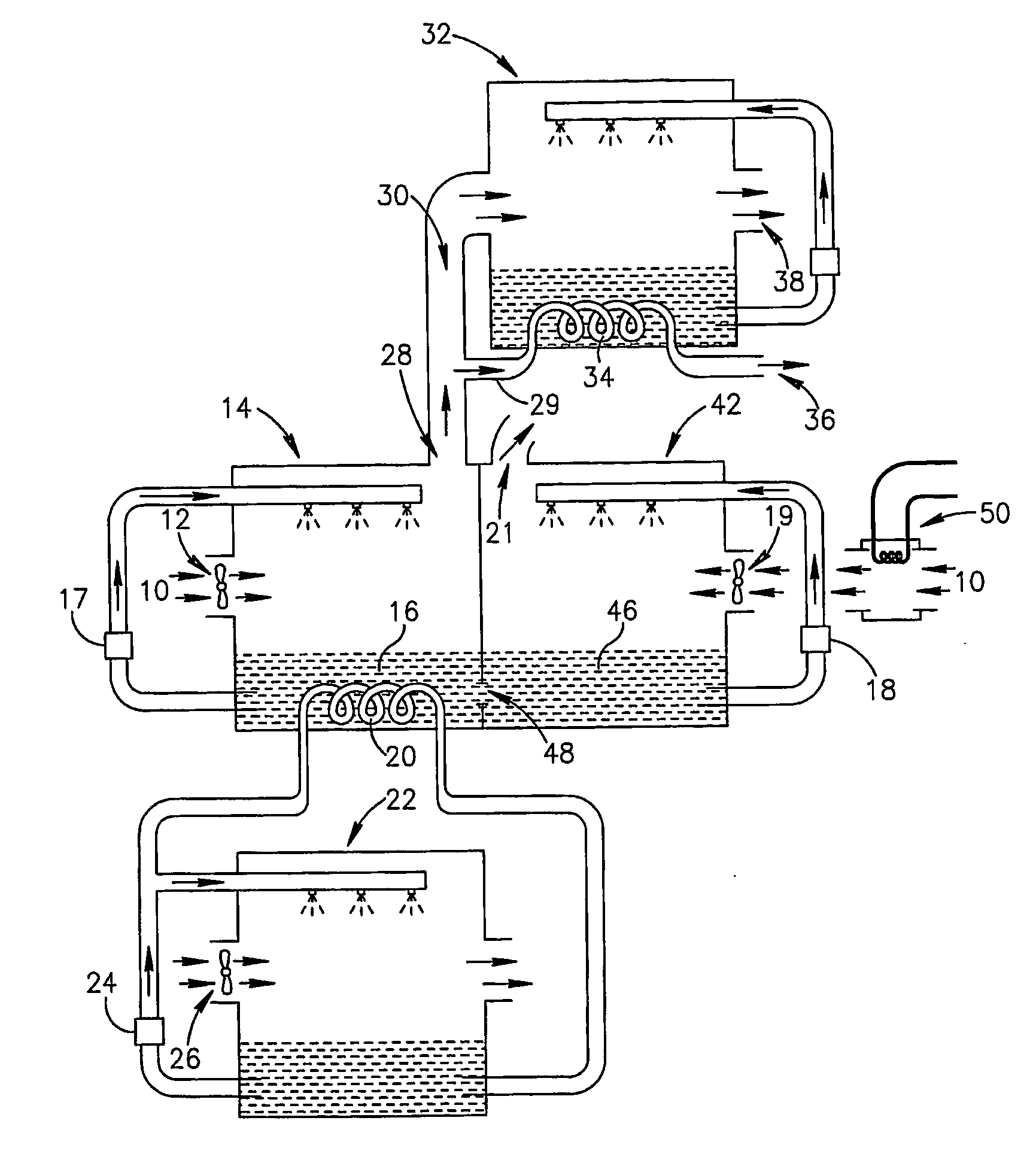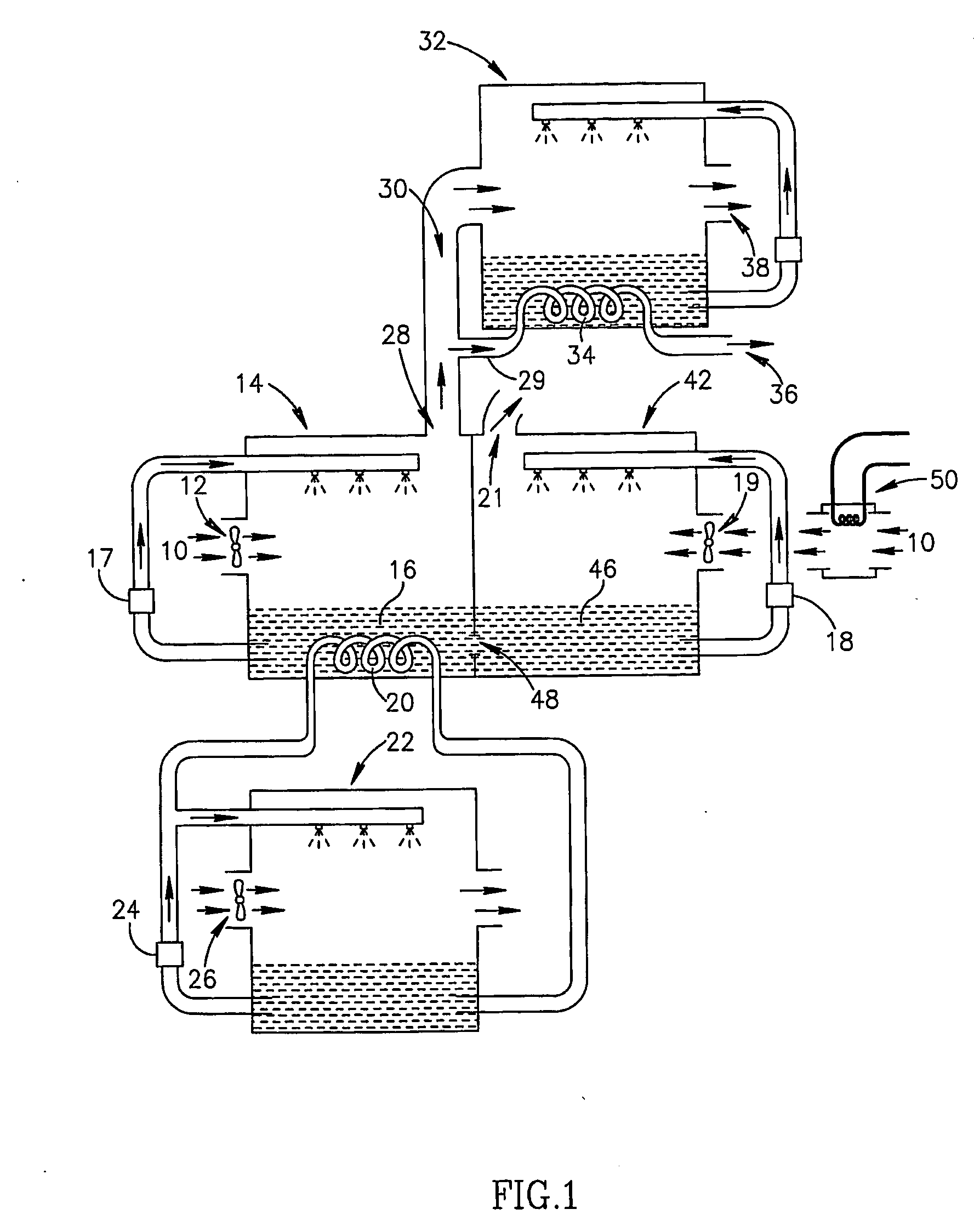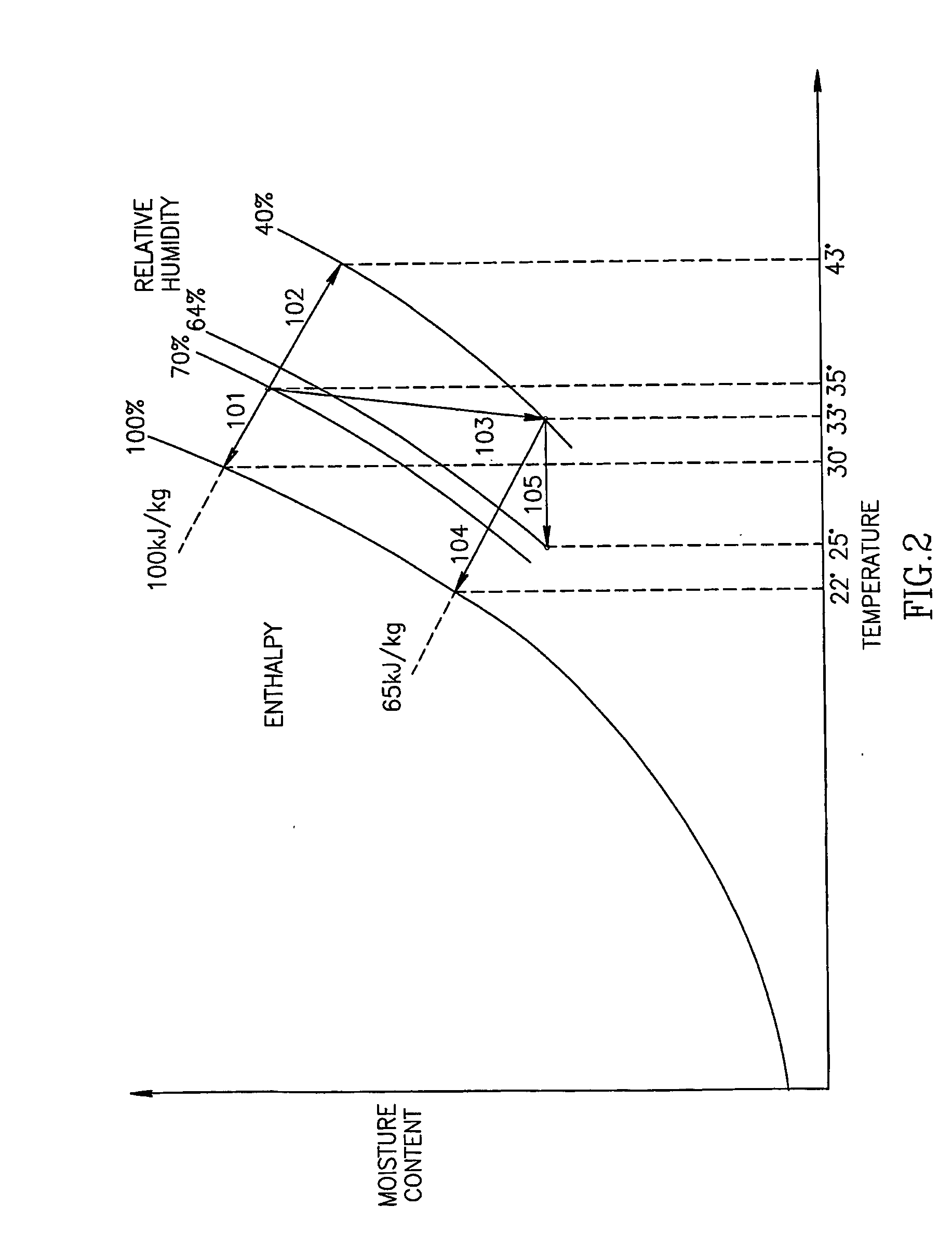High efficiency dehumidifiers and combined dehumidifying/air-conditioning systems
a technology of dehumidifier and air conditioner, which is applied in the direction of cooling fluid circulation, lighting and heating apparatus, domestic heating, etc., can solve the problems of low air conditioner efficiency, high moisture content of cooled, and inability to work well
- Summary
- Abstract
- Description
- Claims
- Application Information
AI Technical Summary
Benefits of technology
Problems solved by technology
Method used
Image
Examples
Embodiment Construction
[0095] FIG. 1 schematically shows a combined dehumidifying / air-conditionin-g system, according to an exemplary embodiment of the invention. Warm and humid air 10 is drawn by an intake fan 12 into a dehumidifying chamber 14 which is associated with a reservoir 16 filled with liquid desiccant. Optionally, the dehumidifier uses a rotating wheel or belt or similar mechanism (not shown in FIG. 1), to circulate desiccant out of and into reservoir 16, as will be described in detail in FIG. 3, exposing the desiccant to the air and allowing the desiccant to absorb moisture from the air. Alternatively, the dehumidifier uses a prior art method of exposing the desiccant to the air, such as spraying, dripping, or wicking the desiccant. FIG. 1 shows a pump 17, which draws the desiccant out of reservoir 16, and drips or sprays it through the air. A regenerating chamber 42, adjacent to the dehumidifying chamber, has its own reservoir 46 of liquid desiccant, and its own pump 18, which draws desiccan...
PUM
 Login to View More
Login to View More Abstract
Description
Claims
Application Information
 Login to View More
Login to View More - R&D
- Intellectual Property
- Life Sciences
- Materials
- Tech Scout
- Unparalleled Data Quality
- Higher Quality Content
- 60% Fewer Hallucinations
Browse by: Latest US Patents, China's latest patents, Technical Efficacy Thesaurus, Application Domain, Technology Topic, Popular Technical Reports.
© 2025 PatSnap. All rights reserved.Legal|Privacy policy|Modern Slavery Act Transparency Statement|Sitemap|About US| Contact US: help@patsnap.com



